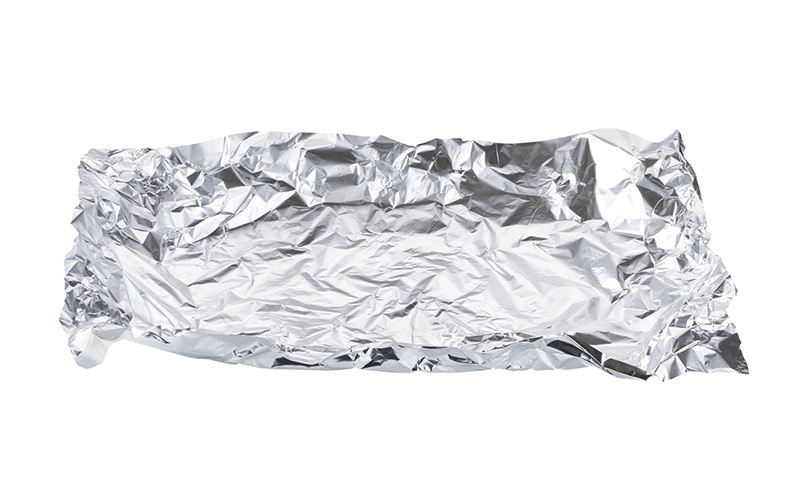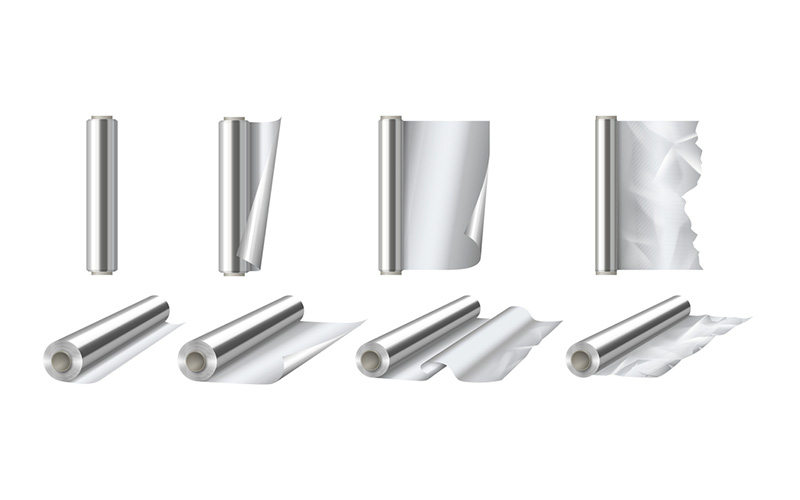
When Was Tin Foil Invented: A Historical Insight into its Origin
The Invention And Evolution Of Tin Foil
The concept of wrapping food and other items in a malleable, protective sheet to extend shelf life, enhance portability, and shield against environmental factors isn't new. The use of tin foil, and subsequently aluminum foil, has spanned centuries, and its journey is a testament to humanity's ingenuity.
The Origins
Before the advent of tin foil, societies already used leaf wrappers and animal skins for preservation. The emergence of tin as a viable metal for various uses dates back to 3500 B.C., with the discovery of bronze, an alloy of tin and copper. Pure tin became more widespread with time, leading to the eventual invention of tin foil.
The Birth Of Tin Foil

Hammering tin into thin sheets started in the late 18th and early 19th centuries. By the mid-19th century, tin foil was commercially produced and used as a wrapping material. The early uses of tin foil were not limited to food preservation. Due to its reflective properties, it was also utilized in various scientific experiments and early photography.
The Advantages
Tin foil gained popularity because of its many benefits. It was malleable, making it easy to wrap around objects of various shapes. It acted as an excellent barrier to odors, light, and contaminants, making it suitable for preserving food. Moreover, it was lightweight and recyclable. Let's
Shift To Aluminum
While tin foil was revolutionary, it wasn't without its drawbacks. One major concern was the 'tinny' taste it could sometimes impart to foods. In the late 19th to early 20th centuries, a shift from tin to aluminum began as aluminum production became more cost-effective and its advantageous properties became evident.
The hallmark moment was in 1910 when the U.S. foil manufacturer, "Reynolds Wrap," began producing aluminum foil for packaging. Aluminum was found to be more abundant, cheaper to produce, and lacked the 'tin taste' that sometimes accompanied foods wrapped in tin foil.
Applications And Modern Use

Over the years, aluminum foil has diversified. Beyond food preservation, it's used in cooking, such as grilling and baking. Its thermal insulation properties have made it indispensable in the kitchen. Moreover, in electronics, thin foils of metal are used as conductors.
The cosmetic and pharmaceutical industries also benefit from foil packaging because it provides an impermeable layer, preventing the contamination of goods.
Environmental Considerations
With the advantages of foil came environmental concerns, primarily surrounding the mining of bauxite for aluminum production. Moreover, while aluminum foil, including Reuse and Recycle Aluminum Foil Pans, is recyclable, a significant portion unfortunately ends up in landfills. Consequently, modern companies and societies are diligently exploring more sustainable methods to reuse and recycle aluminum foil pans, aiming for a greener and more responsible approach to production and waste management.
Conclusion
From its origins as a tin foil in the 19th century to the omnipresent aluminum foil we know today, the journey of this simple yet revolutionary product has been a blend of science, industry, and societal needs. The story of tin and aluminum foil is a testament to human adaptability and the quest for better solutions to everyday challenges.
Frequently Asked Questions
Why Did We Transition From Tin Foil To Aluminum foil?
The transition occurred mainly because aluminum was more abundant, cost-effective to produce, and didn't impart the 'tinny' taste to foods. Additionally, aluminum foil was found to be more durable.
Is Tin Foil The Same As Aluminum Foil?
No, they are different. While both are malleable and used for similar purposes, tin foil is made from tin, and aluminum foil is made from aluminum.
Can You Sill Buy Tin Foil Today?
Today, what is often referred to as "tin foil" is usually aluminum foil. Pure tin foil is rare and not commonly used for cooking or wrapping food due to its potential to taste metallic.
Is Aluminum Foil Recyclable?
Yes, aluminum foil is recyclable. However, cleaning it of any food residue before recycling is essential. Unfortunately, not all used foil gets recycled, leading to environmental concerns.
Why Is Aluminum Foil Shiny On One Side?
Two sheets of aluminum foil are passed through the rollers during the final rolling process. This results in one side becoming shiny (the side in contact with the highly polished steel rollers) and the other side matte (the side in contact with the other sheet of foil).
The history and applications of tin and aluminum foil showcase humanity's continuous effort to improve daily living through innovative solutions. The story reminds us of our ability to adapt to changing needs and challenges.


